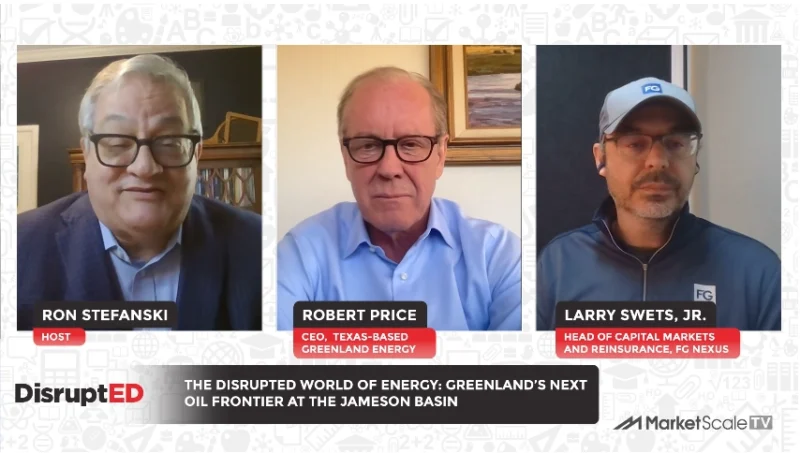U.S. Shale Oil Production is Down. What is Driving this Trend?
Gas prices spiked to over five dollars per gallon this year in many parts of the country, reaching a high of 120.31 dollars per barrel in March of this year. Now, the price is back down to just under 79 dollars per barrel. This drop in barrel price could be just one reason why U.S. shale output growth is seeing some drop-offs in production right now.
Just how much is U.S. shale oil production dropping, and what are some of the other suspected factors at play? While output in the U.S. is on track to reach a record 9.32 million barrels per day (bpd) in the first month of 2023, the month-over-month U.S. shale oil production increase is small, sitting at 94,500 barrels per day more than the month before compared to the 207,500-bpd month-over-month increase in August. Reuters suggests that overworked oil fields and limited production from new wells may be two culprits of the trend.
What are some of the other variables responsible for the drop-off in U.S. shale oil production? Joe Palaia, VP of Business Development at Pioneer Energy, provides insight into the key drivers behind the U.S. shale oil production trend.
Joe’s Thoughts
“Hello, my name’s Joe Palaia. I’m the Vice President of Business Development, Pioneer Energy. Wanted to give you guys my response to question posed to me on the EIA apparently is reporting that the rate of shale oil growth is slowing. And, you know, what’s deal with that? What’s going on?
I personally think that that has a lot to do with the price of oil right now. So, we’re back down on the $75 per barrel range, which is a more modest price per barrel, barrel of oil. And so, you’ve got the producers, you know, that have been burned in the past by you know, the whole drill, baby, drill mentality.
You’re produce as much as possible, quickly as possible. These producers have been burned bad by that in the past. So, their stakeholders in the street are demanding them to exhibit more fiscal responsibility, not get too ahead of themselves, you know, borrow money wantonly, and tend to drill with abandon.
In fact, instead what they’re doing is they’re being much more measured on, you know, how much they develop, focused on good financial returns, and satisfying their stakeholders. So, I think if anything is showing there’s maturity happening in the oil field, oil companies are being much more physically responsible.
I think there’s some other factors, other things which are driving the market, right now. Obviously, we still have ESG concerns and something that’s of great significance and the importance to these stakeholders and then therefore to these oil companies. So, they’re out there trying to implement policy to reduce emissions, produce oil in a more responsible manner.
And so I’m sure that some of this plays into well, we have to allocate resources to do this responsibly and not just drill, even if we don’t have a place, for instance, to get the associated gas to market. I don’t know, let’s just focus on drilling and getting the oil outta the ground. There’s a lot less of that, you know, oil at any cost type mentality.
So, it’s more about, well, we need to think about the big picture here. We need have a total solution, be able to get all of the hydrocarbon we’re producing to market. And so, I think again, that goes back into the maturity of these oil companies. Much more responsible liberate to how…
I think also we’ve got some pressure from the Biden administration on these oil companies. Hey, we need to produce more, we have this whole energy security issue where we need to, mindful of trying to, produce oil domestically, not only for our own needs, so that we don’t have to import oil from others that perhaps we would rather not have to import oil from, but also so that we can provide energy for our allies.
And so, I think that there is push coming from the administration, but you know, how much that’s influencing whether these oil companies are going to drill and produce more? I don’t know. All I know is that it’s definitely a factor. It’s a force acting on the industry right now, and we’ll have to see, you know, in the months ahead how much that really impacts the number of holes that are being put in ground, the amount of oil produced.
So that’s pretty much my take on what’s going on right now, and I hope this is useful.”
For years, we have worried about the supply of non-renewable oil sources, which dominate U.S. automobiles and home life. And it seems we are finally seeing a trail-off in U.S. shale oil production as per-day output is experiencing the smallest gain in seven months, according to Reuters. But that perception that oil output may be dwindling may not be true, according to Tim Snyder, Economist at Matador Economics.
Snyder said there is still plenty of crude oil supply that has not yet been accessed—between 53- and 250-years’ worth in the lower 48 states. In fact, the issue may be more on the social disagreement side than resource depletion, Snyder suggested. “In almost two years, the U.S. government under the direction of the current administration has taken our energy resources on a detour, let’s say, away from what was driving our economy for the last 100 years, and that’s fossil fuels,” he explained.
So, why is there a mismatch in the reported slowdown of oil resources and U.S. shale oil production, while there are stats that suggest otherwise? What is to come for the oil production industry? Tim Snyder, Economist at Matador Economics, explains the current state of oil supply and demand in the U.S.
Tim’s Thoughts on U.S. Shale Oil Production
“Good afternoon. There is a perception that the shale oil and gas industry here in the United States is beginning to slow. To that end, there have been many articles written announcing the death nil of this industry sector. So, we decided it’d be a good idea to put a more accurate set of facts ahead that help put this discussion on a more accurate thing.
Fact number one. It’s been estimated, you’re gonna love this number, that between 53 and 250 years of crude oil supply has been either leased or permitted or has been identified and not accessed yet here in the United States Law of 48, let that sink in between 53 and 250 years, likewise in 2016. In November, the US Geological Survey discovered the largest continuous oil and gas deposit ever found in the United States.
It was chronicled by, in an article by Mary Bowerman who wrote in USA Today Network. That the US Geological Survey announced that the Wolf Camp Shale located in the Midland basin portion of Texas Permian Basin contains 20 billion barrels of crude oil with 1.6 billion barrels of natural gas liquids as.
The Permian is one of the most productive oil and gas section sections of this country. And more than 3000 horizontal wills had already been drilled in this Wolf camp shale section. The agency said the fact that this is a, the largest assessment of continuous oil. We have ever found goes to show that in evened areas that have been producing for years and have produced over billions of barrels of crude oil, there is still potential to find billions more so Walter Guide’s program coordinator for the US GS Energy Resources program.
Let me just add that if we fold in the Apache oil fine as well, that was posted in May of 2016. There’s an additional 3 billion barrels of crude oil and 75 trillion more cubic feet of natural gas in the Permian Basin that has been identified, but yet it’s not been accessed. I’ll stop piling on because I can go on.
Furthermore, our analysis points to more social disagreement than a resource depletion issue, and unfortunately, the facts are being bent to meet a political objective and not satisfying the truth. In almost two years, pursued the US government of the direction of the current administration has taken our energy resources on a detour, let’s say, away from what was driving our economy for over the last two, over the last 100 years, and that’s fossil fuels. There are so many congruent issues at play here that we simply don’t have time to debunk them.
Let’s just say that there’s a lot of information. There’s environmental information that is incorrect and inaccurate and twisted. There is production issues that are not accurate. There are delivery and service issues that are being twisted and turned into misinformation. There’s so much we just can’t get into at all in one sitting. It does, however, beg to question what seems to be the hurry. We know the theatrics of the left that are pushing a narrative that says the world’s gonna end in less than 10 years at current carbon levels in the atmosphere.
We also wonder why the automobile manufacturers have jumped on board so hard. Something is amiss and we believe there’s a reckoning coming soon. Very soon. Because it makes no sense to kill an entire section of an economy to satisfy social change.
It cannot be argued that crude oil, natural gas, and coal fired the engines of the industrial Revolution. Crude oil produced the gasoline and diesel that drives us today and our transportation sector on natural gas and coal, heat, and cool our homes and power the lights that we need and the electricity and the other issues that we need to run our homes and businesses.
Before the recent redirection to renewables, we were the most prosperous economy of all time because of our fossil fuels. We built an economy that began to level the demographic playing field and put the United States in a position to be the defacto leader in the world, be the defacto world market maker in energy, and become energy dependent.
That has changed in the drop of the hat. The paradigm has shifted, and in two short years, the current administration has taken us on a path that jerked the economy away from record setting, pre pandemic highs, and into 40 year deep inflation numbers and recession. With worsening economic conditions projected for 2023, according to the Energy Information Agency, the US produced 9.7 million barrels of crude oil per day right at the beginning of the recovery period as we recognize it after the pandemic now, we began to recover in August of 2020, so let’s call it August of 2020, we were doing 9.7 million barrels of crude oil per day.
In contrast, the average daily production for 2021 was 11.16 million barrels per day. So, it increased in 2022, that average is gonna be somewhere closer to 11.9 million barrels per day and last week’s total of us crude oil production in the United States showed a 12.1 million barrel production per day and poised to move higher in 2023 if we keep demand on track.
Additionally, both ExxonMobil and Chevron have committed to up their CapEx budgets for 2023 and beyond. Chevron pledged to increase their budget for drilling 25% for the next year. That’s a whopping 17 billion for Chevron projects. ExxonMobil pledged to up its CapEx spending for 2023 and beyond for the next five years by between 20 and 25 billion per year.
Now, one might think if production was slowing, we wouldn’t see these numbers and the implications would be dire from mid and downstream customers, but that just isn’t the case right now, unless the Treasury Department under the Biden administration is allowed to put stronger strangleholds on borrowing money and venture capital funds, then all bets are off.
Remember this, a whole host of economic drivers that need to change to upset the supply and demand balance in oil and gas production here in the United States. If economic conditions do not change, we will see a significant change in production, either up or down. But right now, these numbers seem to indicate that we are following demand and not pushing the false narrative that we’re running out of crude oil and natural gas in our shale place.”
Article written by Cara Schildmeyer








